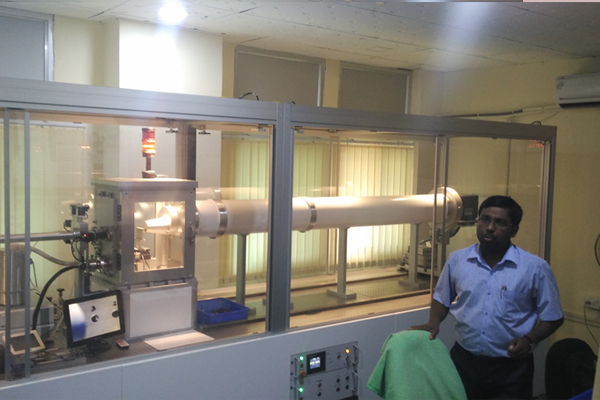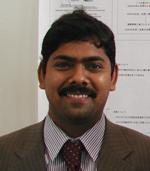- APPLY FOR SLOT
- Internal Users
- External Users
- SLOT BOOKING STATUS
Small Angle X-ray Scattering Laboratory

Phone : +91-3222-283178
Location : OB / FF / 6, CRF
Facilitator :
Prof. Narayan Chandra Das, Rubber Technology Center
Email: ncdas@rtc.iitkgp.ac.in, Contact:+91-3222-283190
For Internal Users - Click Here to apply for Slot
For External Users - Click Here to apply for Slot
Objectives
Fundamental Principles of SAXS:
SAXS makes the use of x-ray scattering toward low angle (typically less than 10 degree). Since this angular range contains information about sample's inhomogeneities (i.e., electron density difference) in size ranging from ~5 to ~150 nm, SAXS can provide structural information (i.e., size, size distribution and shape) of macromolecules of repeat distances in partially ordered systems up to ~150 nm whose dimensions are on the same order as the X-ray wavelength.
People

Prof. Narayan Chandra Das
Facilitator
Rubber Technology Center
ncdas@rtc.iitkgp.ac.in
+91-3222-283190

Mr. Souvik Das
Technical Staff
Central Research Facility
sd_dass89@rediffmail.com
Equipment Details
Small Angle X-Ray Scattering (SAXS)
Manufacturer : XENOCS S.A. France, Xenocs SAS - Headquarters
38360 Sassenage, France
Instrument Details :
X-ray Source : 30 Watts Cu tube with 50 KV 0.6mA current
Optics : Single reflection multilayer parabolic mirror.
Slits : Single crystal scatter less slits ( S1, S2)
Detector : Single photon counting Hybrid pixel on-line
detector Pilatus 300K from Dectries.
Automation : SpecFE based software to control motors slits, etc.
Data Acquisition : Foxtrot
Analysis Software : Sasfit from Synchtron Granobel.
Purchase source : H P I Services, India
Year of installation : 2015
Utility and Working Principal

It works on the principle of Braggs Law.
nλ=2d sinθ, where:
- λisthe wavelength of the x-ray,
- disthe spacing of the crystal layers (path difference),
- θis the incident angle (the angle between incident ray and the scatter plane), and
- nisan integer
Sample Details
The samples can be solid or liquid and they can contain solid, liquid or gaseous domains (so-called particles) of the same or another material. The applications include a wide variety of samples such as colloids, metal particles, ceramic particles, polymers, proteins and pharmaceuticals in the form of power, gel, thin film, solution, etc.
